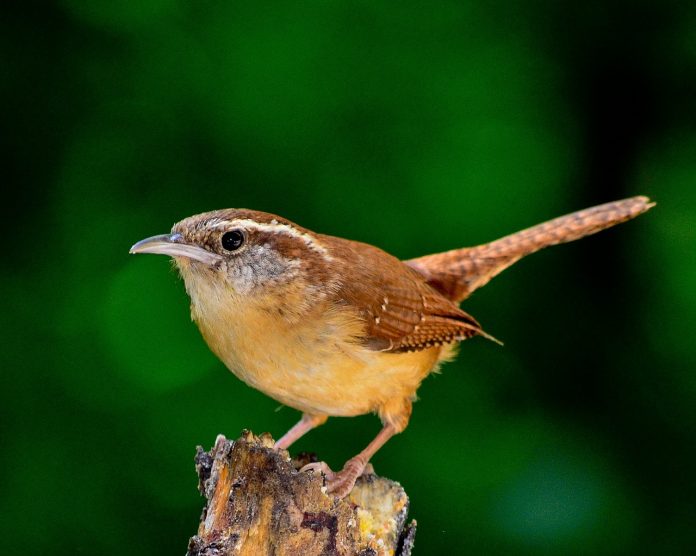Identifying an unknown bird can be tricky, but there are several key characteristics to look for when trying to identify a bird you’ve never seen before.
When you see an unfamiliar bird, study it through binoculars as long as the bird stays in view and mentally note its size, distinctive shapes (such as a cardinal’s crest), markings (such as a towhee’s white wing patches), colors, behaviors (such as a killdeer’s broken wing act), and voice.
The first and most important characteristic to note is size, so let’s focus on that. I think most people are familiar with chickadees, robins, and crows, so use these birds as size references for small, medium, and large birds.
Species size
As my reference for this discussion, I use the Smithsonian Field Guide to Birds of North America because it is one of just a few field guides that includes average size information for each species.
Lengths from the tip of the bill to the tip of the tail are listed in inches. Weights are given in grams (g) for birds weighing less than one ounce or ounces (oz.) or pounds (lb.) for larger species.
Remember that 28.35 grams equal one ounce. Let’s begin with a group of familiar small birds — Carolina chickadee, house wren, Carolina Wren, White-breasted nuthatch, and tufted titmouse — all less than 7 inches long.
Relying solely on your memory, which of these small birds is smallest? Biggest? Carolina chickadees and house wrens are the same size — 4.75 inches long and 11 g.
Carolina wrens, white-breasted nuthatches, and titmice all weigh in at 21 g, but at 6.5 in. titmice are a full inch longer than Carolina wrens and nuthatches. Furthermore, Carolina wrens, nuthatches, and titmice are nearly twice as massive as Carolina chickadees and house wrens.
Knowing this, you can know look at them with a more discerning eye.
Medium birds
The sizes of medium birds can be even more deceptive. Consider six common medium sized birds ranging in size from 7 to 11 inches long: mockingbird, cardinal, rose-breasted grosbeak, robin, starling and blue jay.
Which of these birds weighs least? Most? Before checking the numbers, I was confident that robins outweighed mockingbirds. Both measure 10 inches, but Robins (2.7 oz.) outweigh mockers (1.7 oz.) by almost 60 percent.
They just look chunkier. But this spring, as I’ve been watching cardinals and rose-breasted grosbeaks visit my feeders every day, often side by side, I was shocked to learn that they weigh the same — 1.6 oz. Cardinals (8.75 in.) are a bit longer than the grosbeaks (8 in.), so the Grosbeaks appear more compact.
I was mistaken that they outweighed Cardinals significantly. Another interesting comparison is starlings and blue jays. The starling’s short tail makes a smaller impression (8.5 in.) compared to the much longer Jay (11 in.), but both these birds weigh in at about three ounces.
As bird size increases so do the error of eyeball size estimates. I often tell people that pileated woodpeckers are about the size of crows.
Bulk versus size
That’s OK for length. At 17.5 inches, crows are just an inch larger. But crows outweigh pileateds one pound to 10 ounces. Bulk makes a big difference.
A comparison between crows and ravens is equally striking, but unless seen side by side, the difference is difficult to appreciate. At 24 inches long and 2.6 pounds, Ravens are the largest songbird; crows are diminutives by comparison.
Finally, just for the sake of comparison, some other well known big birds include red-tailed hawk (19 in., 2.4 lb.), mallard (21 in., 2.4 lb.), great horned owl (22 in., 3 lb.), turkey vulture (26 in., 4 lb.), and bald eagle (31 in., 9.5 lb.).
When you see a new bird for the first time, assess size first, then compare it to other birds you know. Then move on to shapes, markings, colors, behaviors, and voice. You’ll discover that bird ID suddenly gets easier.













